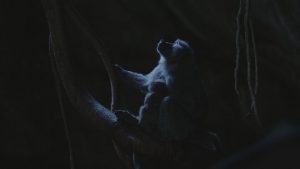
Volcanoes are temperamental, dangerous and deadly. Not the ideal place for wildlife. But Mt. Suswa in Kenya is a volcano like no other: it hosts a multitude of life both above and below its surface. Underground tunnels were formed thousands of years ago by rivers of lava whose outer layers cooled and solidified while the core continued to flow. Once the fluid lava evacuated itself completely, massive subterranean tubes were left behind.
One of these caverns is the “Baboon Parliament” as the local Masai named it.
Remarkably, Suswa is the only known place in theworld where olive baboons roost in caves. It is an almost unique behaviour among primates that gives us a glimpse over the reasons that drove hominids to find shelter into caves in pre-historic times. Surprisingly so far no film has ever been made exclusively about this natural history wonder. 
Mt. Suswa’s rugged flanks conceal an untouched treasure trove of biodiversity hidden inside its craters and in the deep and mysterious scars left behind by its turbulent past. But the mountain’s true colours are locked up within an aura of mystique: Mt. Suswa is a fortress protected by its own inaccessibility. Its bastions are steep, barren and sharp, discouraging any unwanted visitors.

(Featured mammal species: olive baboon, rock hyrax, bat-eared fox, african wild dog, spotted hyena, kirk’s dik-dik, klipspringer, large-eared free-tailed bat, African elephant…).








